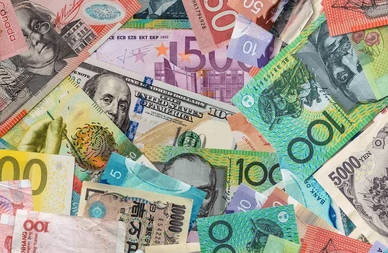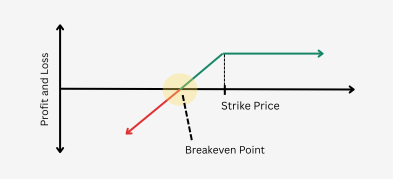
Ultima Markets App
Trade Anytime, Anywhere
Important Information
This website is managed by Ultima Markets’ international entities, and it’s important to emphasise that they are not subject to regulation by the FCA in the UK. Therefore, you must understand that you will not have the FCA’s protection when investing through this website – for example:
- You will not be guaranteed Negative Balance Protection
- You will not be protected by FCA’s leverage restrictions
- You will not have the right to settle disputes via the Financial Ombudsman Service (FOS)
- You will not be protected by Financial Services Compensation Scheme (FSCS)
- Any monies deposited will not be afforded the protection required under the FCA Client Assets Sourcebook. The level of protection for your funds will be determined by the regulations of the relevant local regulator.
Note: Ultima Markets is currently developing a dedicated website for UK clients and expects to onboard UK clients under FCA regulations in 2026.
If you would like to proceed and visit this website, you acknowledge and confirm the following:
- 1.The website is owned by Ultima Markets’ international entities and not by Ultima Markets UK Ltd, which is regulated by the FCA.
- 2.Ultima Markets Limited, or any of the Ultima Markets international entities, are neither based in the UK nor licensed by the FCA.
- 3.You are accessing the website at your own initiative and have not been solicited by Ultima Markets Limited in any way.
- 4.Investing through this website does not grant you the protections provided by the FCA.
- 5.Should you choose to invest through this website or with any of the international Ultima Markets entities, you will be subject to the rules and regulations of the relevant international regulatory authorities, not the FCA.
Ultima Markets wants to make it clear that we are duly licensed and authorised to offer the services and financial derivative products listed on our website. Individuals accessing this website and registering a trading account do so entirely of their own volition and without prior solicitation.
By confirming your decision to proceed with entering the website, you hereby affirm that this decision was solely initiated by you, and no solicitation has been made by any Ultima Markets entity.
I confirm my intention to proceed and enter this website Please direct me to the website operated by Ultima Markets , regulated by the FCA in the United KingdomG10 Currency Explained: What Moves Them

The foreign exchange market is the largest and most liquid financial market in the world, and at the heart of it are the G10 currencies. The G10 currency are the most heavily traded, the most liquid, and often the most stable, making them essential for traders, investors, and central banks alike.
Understanding what the G10 currencies are and what drives their prices can give traders an edge in navigating global markets.
What Are G10 Currencies?
The G10 currencies are a group of ten widely traded currencies from advanced economies with strong financial systems. They are listed here in no particular order:
- US dollar (USD)
- Euro (EUR)
- British pound sterling (GBP)
- Japanese yen (JPY)
- Swiss franc (CHF)
- Canadian dollar (CAD)
- Australian dollar (AUD)
- New Zealand dollar (NZD)
- Norwegian krone (NOK)
- Swedish krona (SEK)
Although the term “G10” is often linked to the G10 countries, the match is not exact. Several European countries share the euro, leaving space for other important currencies such as the Australian dollar, New Zealand dollar, and Norwegian krone to be included. Together, these currencies dominate global forex turnover, providing unmatched liquidity and reliability.

Why the G10 Currency Matter
G10 currencies play a critical role in global finance. They are widely accepted in international trade and investment, and many of them (particularly the USD, EUR, JPY, GBP, and CHF) are held as reserve currencies by central banks. Others, such as AUD and CAD, also appear in reserves but in smaller proportions.
Their liquidity allows traders to enter and exit positions easily, while their relative stability makes them less prone to the sharp swings that often affect emerging market currencies. For traders, this combination of liquidity and resilience provides opportunities to profit from both short-term volatility and long-term economic trends.
What Moves the G10 Currency?
Like all currencies, G10 exchange rates are shaped by a complex web of global factors. However, due to their dominance, the drivers of G10 currencies often set the tone for the entire forex market.
Commodity Prices
Several G10 currencies are closely tied to commodities. The Australian dollar tends to move with gold and copper, while the Canadian dollar is heavily influenced by oil exports. Norway’s krone is also linked to oil markets. On the other hand, Japan, as a major energy importer, often benefits when oil prices fall.
China plays an indirect role here as well. As one of the world’s largest commodity importers, strong Chinese growth tends to support resource-linked currencies like AUD and CAD, while a slowdown can weigh them down.
Central Bank Policies
Interest rates set by central banks are among the most powerful drivers of G10 exchange rates. Higher interest rates attract foreign investment, strengthening a currency, while lower rates usually weaken it. Traders watch central banks such as the Federal Reserve, European Central Bank, Bank of England, and Bank of Japan closely, as even small policy changes or forward guidance can ripple through G10 pairs.
Economic Indicators
Economic data releases provide a window into the health of an economy and often spark volatility in G10 currencies. Reports such as GDP growth, inflation, and employment figures can change expectations for future monetary policy. For example, US non-farm payrolls (NFP) often cause sharp swings in USD pairs, while Australian jobs data or Norwegian inflation reports frequently move AUD and NOK.
It also helps to distinguish between types of indicators. Leading indicators such as consumer confidence point to future trends, lagging indicators like unemployment confirm long-term shifts, and coincident indicators such as retail sales reflect the economy’s current state. Together, they provide traders with a roadmap of where currencies might be headed.
Trade Balances
A country’s trade balance — the difference between exports and imports — also influences its currency. A trade surplus strengthens a currency because foreign buyers need to purchase it to pay for exports. A deficit, by contrast, can weaken a currency due to net outflows. This is particularly relevant for export-driven economies like Canada, Norway, and Australia.
Political and Geopolitical Events
Politics often leaves a lasting mark on currencies. Domestic issues like elections or policy shifts can cause uncertainty, while global events such as trade disputes, sanctions, or conflicts may drive investors into or out of certain currencies. For example, Brexit created long-term volatility in the British pound, while trade tensions between the US and China have historically affected both USD and commodity-linked currencies.
Risk Sentiment and Safe Havens
Finally, investor sentiment plays a critical role. In times of global uncertainty, traders tend to move into “safe-haven” currencies such as the Japanese yen and Swiss franc. When markets are optimistic, risk-sensitive currencies like the Australian and New Zealand dollars tend to benefit.
How Traders Approach the G10 Currency

Understanding what moves G10 currencies is only part of the picture. Traders also rely on strategies to manage risk and capture opportunities.
- Technical analysis helps identify trends, support and resistance levels, and entry or exit points using tools like moving averages, RSI, and Fibonacci retracements.
- Fundamental analysis focuses on the bigger picture, including central bank policy, economic indicators, and global events.
- Risk management is essential in forex trading. Traders often set stop-loss orders, diversify across multiple pairs, and size positions carefully to protect their capital in volatile markets.
By blending these approaches, traders can build strategies that align with both short-term market moves and long-term economic cycles.
Final Thoughts
The G10 currency group sits at the core of global finance, shaping trade, investment, and monetary policy. Their prices move in response to commodity cycles, central bank decisions, economic data, politics, and shifts in investor sentiment. For traders, they offer a unique mix of stability, liquidity, and opportunity.
Whether you are focused on major pairs like EUR/USD and USD/JPY, or exploring crosses such as AUD/NZD or EUR/CHF, understanding the forces behind G10 currencies is key to building effective trading strategies and navigating the ever-changing forex market.
FAQs About G10 Currencies
Is the Chinese yuan a G10 currency?
No. The Chinese yuan (CNY) is not part of the G10 group. While it is increasingly important in global trade and finance, it is classified as an emerging market currency, not one of the G10 majors.
Which G10 currency is considered the safest?
The Japanese yen (JPY) and Swiss franc (CHF) are widely seen as safe-haven currencies. They tend to strengthen during periods of global uncertainty as investors look for stability.
Are all G10 currencies reserve currencies?
Not all. The US dollar, euro, Japanese yen, British pound, and Swiss franc are heavily held as reserves by central banks. Others like the Canadian and Australian dollars appear in reserves but at smaller levels.
Why do traders prefer G10 currencies?
Because of their liquidity, stability, and global acceptance. These currencies allow traders to enter and exit positions easily, with lower spreads and fewer risks compared to emerging market currencies.
Disclaimer: This content is provided for informational purposes only and does not constitute, and should not be construed as, financial, investment, or other professional advice. No statement or opinion contained here in should be considered a recommendation by Ultima Markets or the author regarding any specific investment product, strategy, or transaction. Readers are advised not to rely solely on this material when making investment decisions and should seek independent advice where appropriate.












